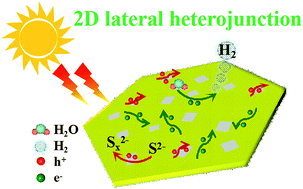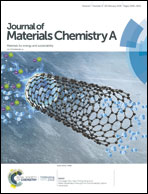Lateral heterojunctions within ultrathin FeS–FeSe2 nanosheet semiconductors for photocatalytic hydrogen evolution†
Abstract
Two-dimensional (2D) layered heterostructures have attracted substantial attention in recent years as promising platforms for the direct conversion of renewable solar energy to chemical fuels due to their unique optoelectronic, transport, and interfacial properties. The rational structural design and tailored synthesis of semiconductor heterojunctions are critical to explore and achieve well-defined photocatalytic systems. Herein, we propose a design strategy for ultrathin 2D FeS–FeSe2 lateral heterostructures to achieve rapid spatial migration of photogenerated charge carriers and to facilitate favorable kinetics of target surface redox reactions for photocatalysis. The resultant composites have superior photocatalytic H2 generation activity (2071.1 μmol g−1 h−1) without any noble metal as a cocatalyst under sunlight and show marked photocatalytic durability after a continuous test for 20 h under alkaline conditions. In particular, we have found, for the first time, that the irradiated FeS–FeSe2 is active for producing H2O2 by the two-electron reduction of O2 in the photocatalytic degradation process of phenol solution. A series of mechanistic studies on photocatalysis clearly demonstrates that the pronounced photocatalytic performance of the 2D lateral heterojunction nanosheets could be a result of increased carrier density, longer electron lifetime and higher hole injection efficiency as well as a stepwise two-electron/two-step reduction pathway.

- This article is part of the themed collection: 2019 Journal of Materials Chemistry A HOT Papers


 Please wait while we load your content...
Please wait while we load your content...